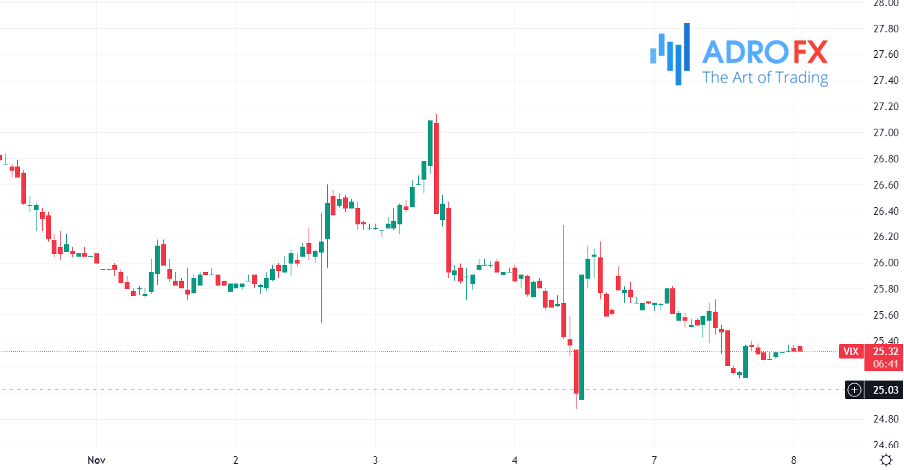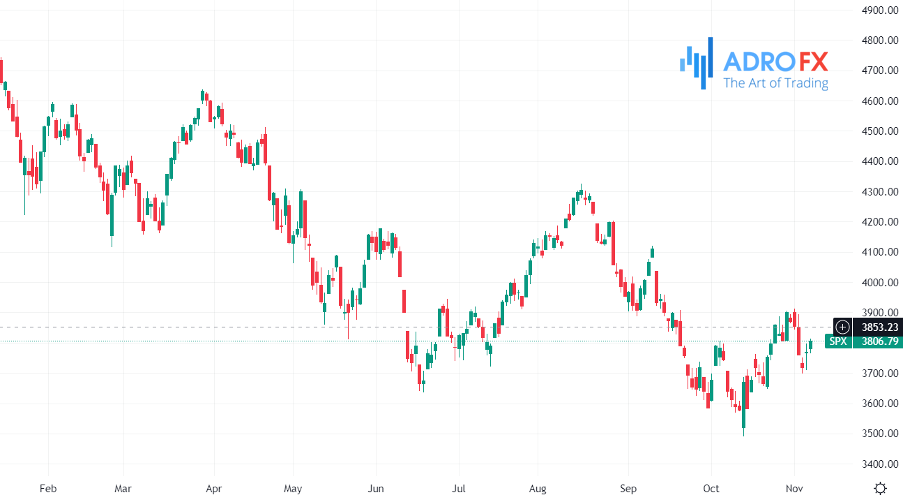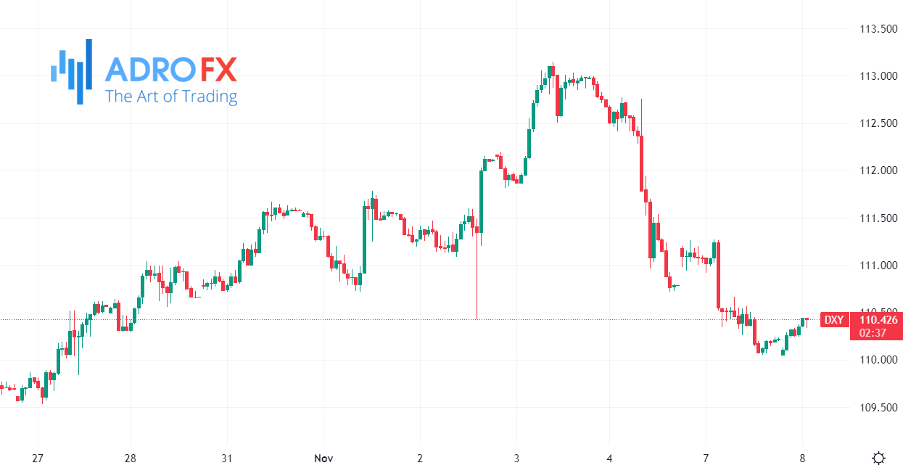Election and Inflation Data in the Spotlight | Daily Market Analysis

Key events:
USA – EIA Short-Term Energy Outlook
The two main catalysts for this week could either revive the fading stock rally or end it.
After Friday's mixed macro data, investors buying up the drawdown helped the bulls save face at the end of the first trading week in November, during which the stock declined in every session. After a one-week drop of 5.25%, traders thought the game was worth playing the day after Fed Chairman Jerome Powell may have hinted at a less steep interest-rate hike in the future after four straight 75-basis-point hikes. Powell did not rule out the possibility of slowing rate hikes, but then fell again when he explained that the Fed would not stop tightening policy until it took control of inflation.
The VIX volatility index suggests that fears in the market remain.

Even after falling from October's highs, which match the lows in stocks from last month, the VIX index remains near 25.00. Except for the collapses of 2008 and 2020, the indicator has always been below those levels.
The S&P 500 Index has already moved more than 7% in either direction for the month five times this year. Such dramatic changes are very rare. The last time something like this happened was during the 2008 crisis and before that in 1933.
Even if the bulls are right and the stock market bottoms, it will happen under the sign of increased volatility. But there are no signs of a bottom. Moreover, we got a signal that the downtrend will resume.
The S&P 500 index shows higher highs and lows in the short-term time frame but continues to fall in the medium-term time frame.

However, the S&P 500 did not rally as sharply from the highs as it did from the lows, so the bulls gave up, allowing the index to fall below the pattern. The break out is supposed to set off a technical chain reaction, where the shorts and the covered longs will take the index down to my target of 3200 on July 20 and maybe even to the target of 3000 on August 25.
Investors will be paying close attention to Thursday's CPI release after the index for September topped out above the forecast, rising to its highest level in 40 years. Investors need to understand that even as CPI falls, it will remain well above the Fed's acceptable level, and the central bank probably won't be inclined to rest on its laurels today and just watch inflation after it missed price gains last year.
Wells Fargo expects the Fed's final rate level, the level at which the central bank will stop raising rates, to fall by 12 basis points with CPI below 0.4%. According to a Reuters poll, the monthly CPI increase would be 0.5%.
Let's turn now to politics. The Democrats' unexpected success in the upcoming November 8 midterm elections may raise concerns that the Democrat-controlled Congress will continue to ramp up budget spending, contributing to increased inflationary pressures.
Last week saw the greatest inversion of the bond yield curve since the 1980s, sending an unmistakable message of recession.
Thursday's 2-year Treasury yield was 58.6 basis points higher than the 10-year Treasury yield - the widest spread in 40 years. On Friday, the degree of inversion diminished along with the level of investor concern, as evidenced by rising stocks and a declining VIX.
The dollar fell 1.8%, its steepest drop in a year. The decline in the U.S. currency was due to expectations of a slowdown in the pace of rate hikes, which contributed to the rally in stocks on Friday.

The yield curve inversion is seen as positive for gold prices, which rebounded from a one-month low amid heightened hopes of a slowdown in rate hikes. However, in expecting gold prices to rise in a recession, investors are assuming that the Fed will cut interest rates to get out of the recession, and here we are talking about the long-term outlook.









